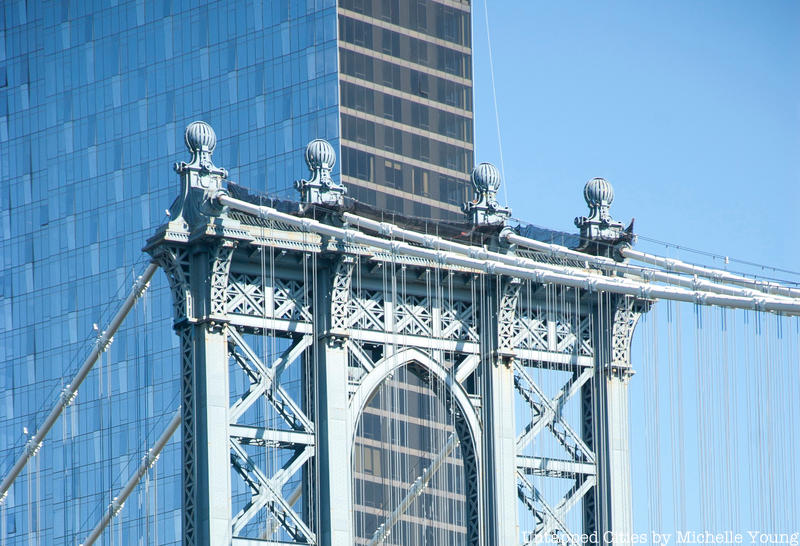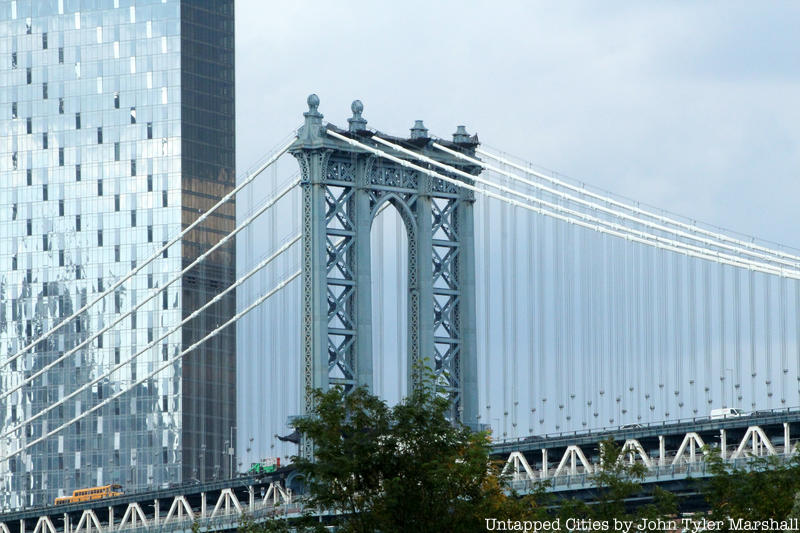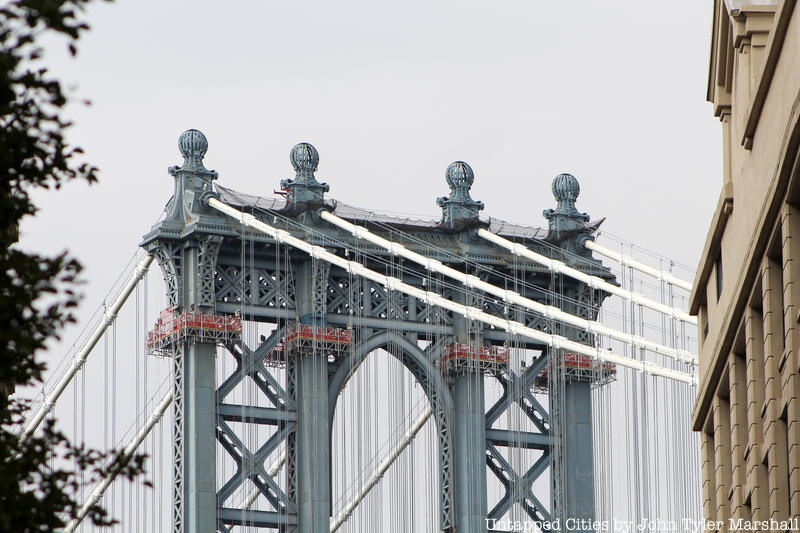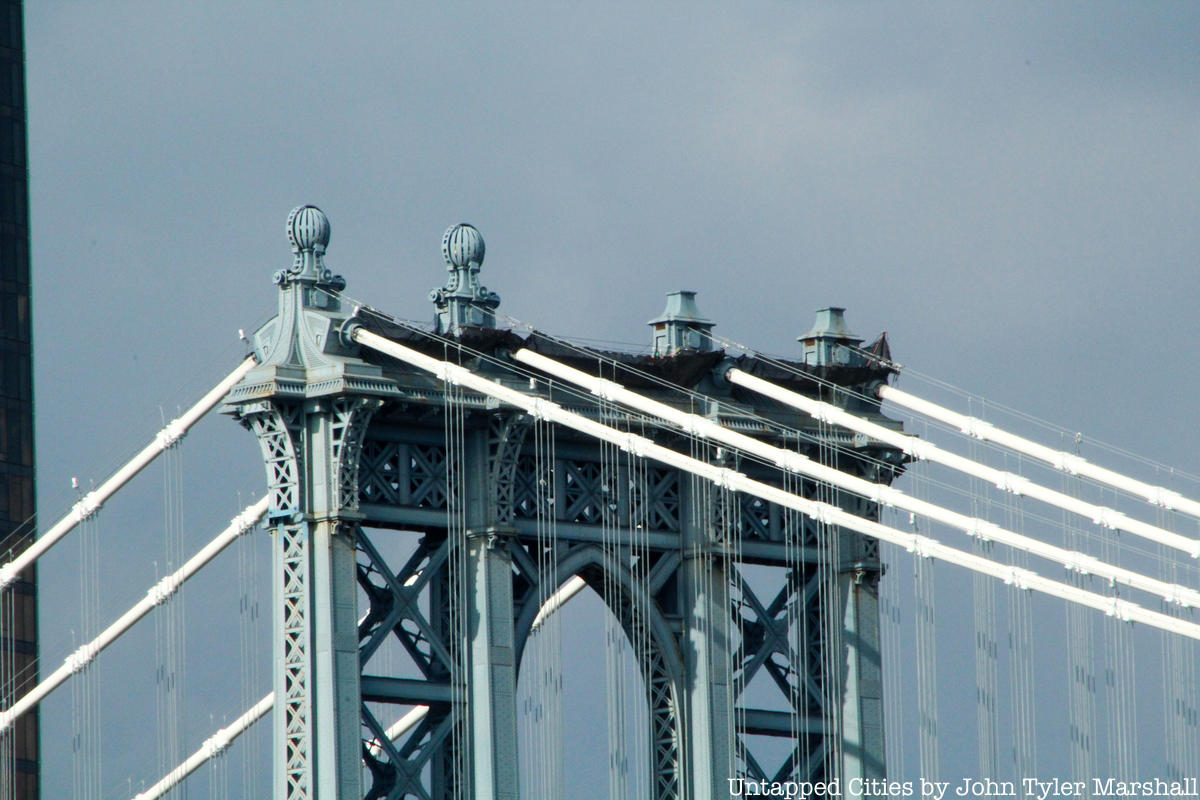Gasp! On Monday, the NYC DOT announced via Twitter that the 110-year old cast iron globes atop the Manhattan Bridge were starting to be removed from the Manhattan-side tower, and in the next week the other two will come down. Not to fear however, they are being “recast & replaced with exact replicas” by the end of this year according to DOT.
During an inspection and review process, the globes which are about 336 feet above mean high water were determined to be “structurally compromised” and believed to contain lead paint so “they could not be salvaged and will be safely disposed of.” Dave Frieder, author of the recent new book The Magnificent Bridges of New York that original globes, which are technically called spheres, have cracks and are severely rusted. “They were in danger of falling onto the roadways or pedestrian walkways,” he tells us, and that the replicas will be made of cast steel.
 Manhattan side tower on Friday, September 27th, 2019.
Manhattan side tower on Friday, September 27th, 2019.
If you look closely at our photographs (the below taken last Friday, a day before the removal process began), you can see netting that has been there for some time. Issues with the decorative elements have been noted since 2017, with not only with the globes but with parts in the decorative archway under the bridge, including “ornamental cornices, railing panels, and rosettes crumbling into the water.”

Gothamist first reported on the globe replacement and notes that the globe replacement project is part of a $75.9 million contract with Skanska to rehabilitate the Manhattan Bridge. Reader comments on the article at the NYC DOT Facebook page appear to favor saving them for an art project or the collection of a museum, but that is not in the current plan. We reached out to NYC DOT but so far have not received back comment.
 Globes still remaining on the Brooklyn side
Globes still remaining on the Brooklyn side
Mostly forgotten today, the innovations of the Manhattan Bridge were numerous. Frieder writes in The Magnificent Bridges of New York “The span is heralded as the pioneer and model for modern long-span suspension bridges, and is the first suspension bridge to utilize a Warren truss and flexible steel towers in its architecture. The bridge is also the first of its kind to engage the deflection theory of Austrian academic Josef Melan, which explains how the cables and the deck work together under the weight of gravity to support bridge loads.”
On Saturday night, two globes were safely removed from the top of the #ManhattanBridge (Manhattan-tower), with the remaining two being removed next week.
These ornamental globes were originally installed over 110 years ago, and will be recast & replaced with exact replicas. pic.twitter.com/Kn3g63Tmfb
— NYC DOT (@NYC_DOT) September 30, 2019
Next, check out the Top 10 Secrets of the Manhattan Bridge.






